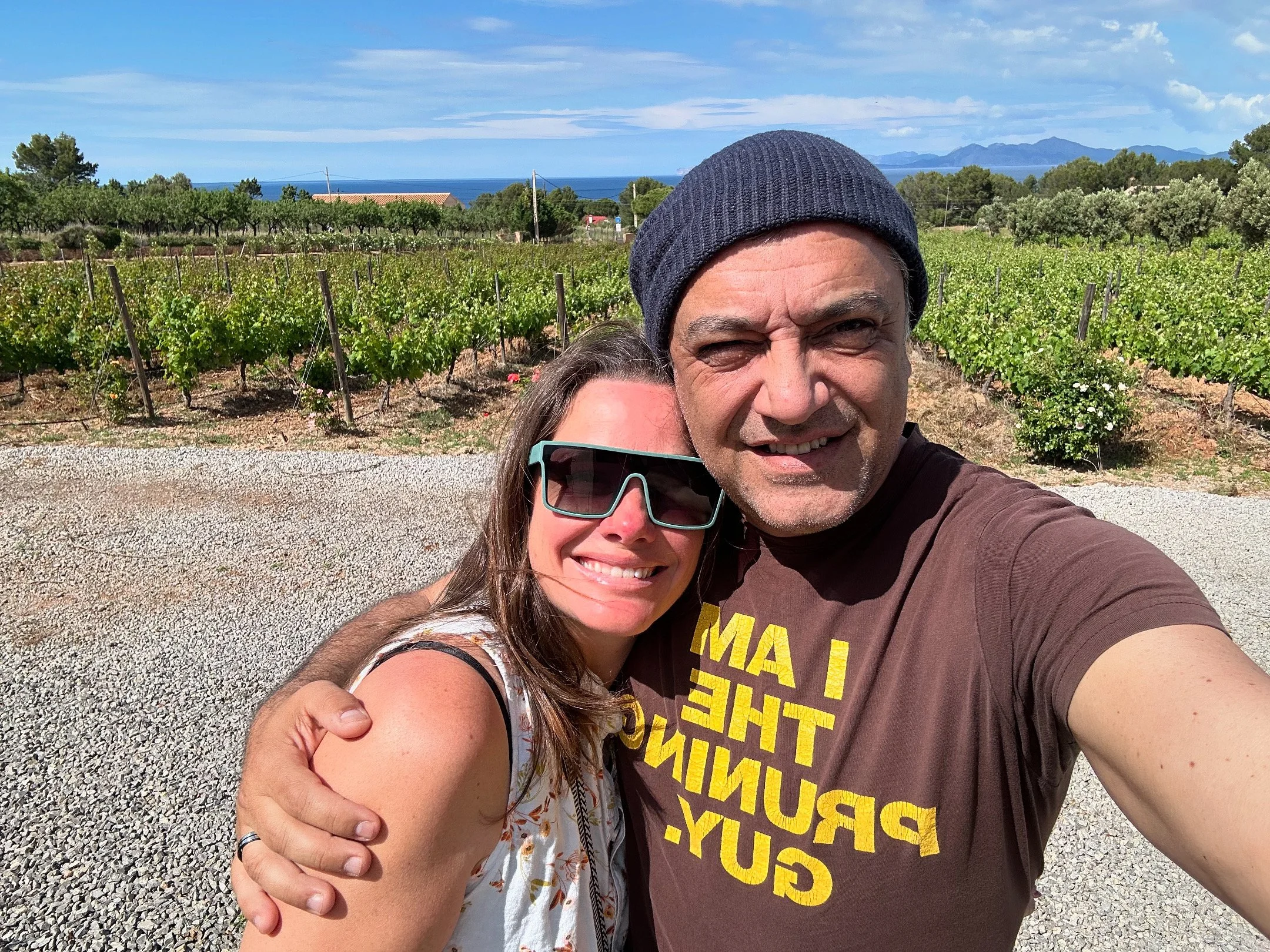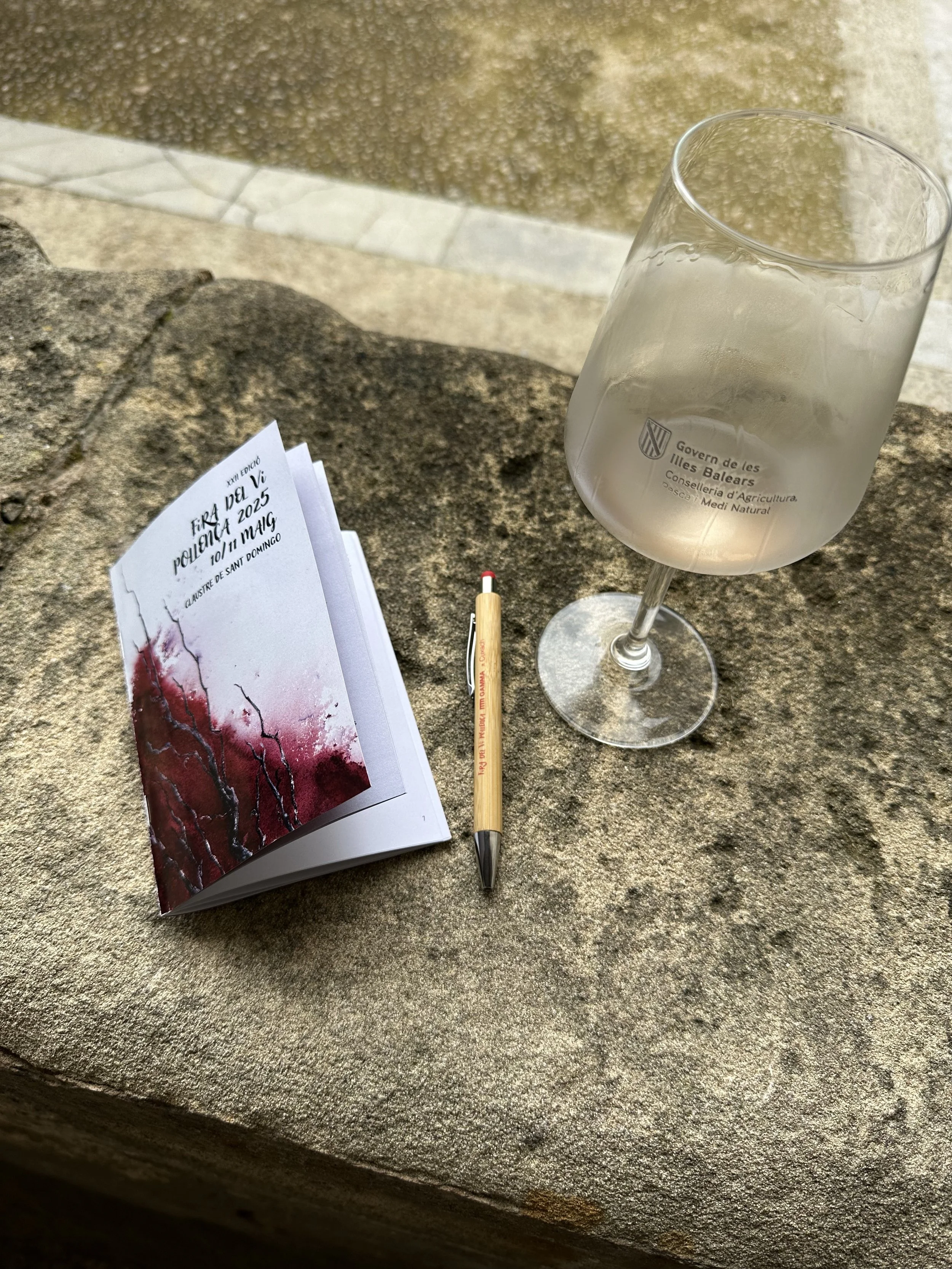A Taste of Mallorca: Wines, Grapes, and the Island that Grows Them
Hey everyone,
I came out here to Mallorca with a mission—to taste the island’s wines, meet the people making them, and bring the best bottles back to you through our Camino al Vino wine club. But as I travel, I want to do more than just taste. I want to share the story behind the wine: where it comes from, how it’s made, and why it’s worth discovering.
So, where exactly is Mallorca?
It’s the biggest of the Balearic Islands, just off the east coast of Spain, right in the middle of the Mediterranean. The land is incredibly diverse—coastlines, mountains, valleys, and limestone soils—all packed into a relatively small island.
The Wine Regions
Mallorca has two main Denominations of Origin (DOs):
Binissalem DO (in the center)
Pla i Llevant DO (southeast)
Other wines are made under Vi de la Terra Mallorca, which gives winemakers more freedom with grape selection and style.
Climate and Landscape
Mallorca has a Mediterranean climate—hot, dry summers and cooler, wetter winters. The Serra de Tramuntana mountains stretch across the northwest and play a huge role in shaping microclimates, especially by blocking harsh northern winds. The Mediterranean Sea moderates temperatures and brings in much-needed breezes.
Soils range from clay-limestone in the central plain to rocky, gravel-rich terrain on hillsides. These soils drain well and help control vigor, which is ideal for winegrowing.
Climate Change & Trellising
With rising temperatures and less predictable rainfall, water is becoming a key issue. This year, luckily, we’ve had solid winter rains. But the trend is toward drier seasons, and that’s changing vineyard practices. You’ll see cordon-trained vines in newer plantings for easier management and air circulation, but also traditional gobelet (bush) vines that help shade grapes from heat—a method that might actually make a strong comeback.
Grape Varieties
Mallorca grows both international and local grapes. Here’s a quick breakdown:
International: Syrah, Cabernet Sauvignon, Merlot, Chardonnay, Sauvignon Blanc
Local Varieties:
Manto Negro – soft, light red fruit, herbal, chillable red
Callet – earthy, spicy, dusty cherry, great with food
Fogoneu – light, floral, often used in blends
Prensal Blanc (Moll) – delicate, pear and white flowers
Giró Ros – fuller, sometimes oaked, stone fruit and spice
Escursac – light-bodied red with finesse and perfume
There’s a big push here to preserve these indigenous grapes. More winemakers are focusing on them, reviving old vines, and showing off Mallorca’s true identity.
Mallorcan Food & Wine Pairings
Mallorca has its own culinary identity, and the local wines are a perfect match:
Sobrasada (spicy cured sausage) – pairs with Callet or Manto Negro
Tumbet (vegetable casserole) – works with Prensal Blanc
Frito Mallorquín (lamb and liver sauté) – Callet or a red blend
Arroz Brut (rustic meat rice stew) – structured Callet or Syrah
Coca de Trampó (vegetable flatbread) – lovely with Prensal or Escursac
These wines are made for this food—and this place.
Next up, I’ll share the bottles I’m selecting for the club and break down how they taste. This is just the beginning of our journey through Mallorca, and I’m excited to take you along.
Cheers from the island,
Ertugrul







